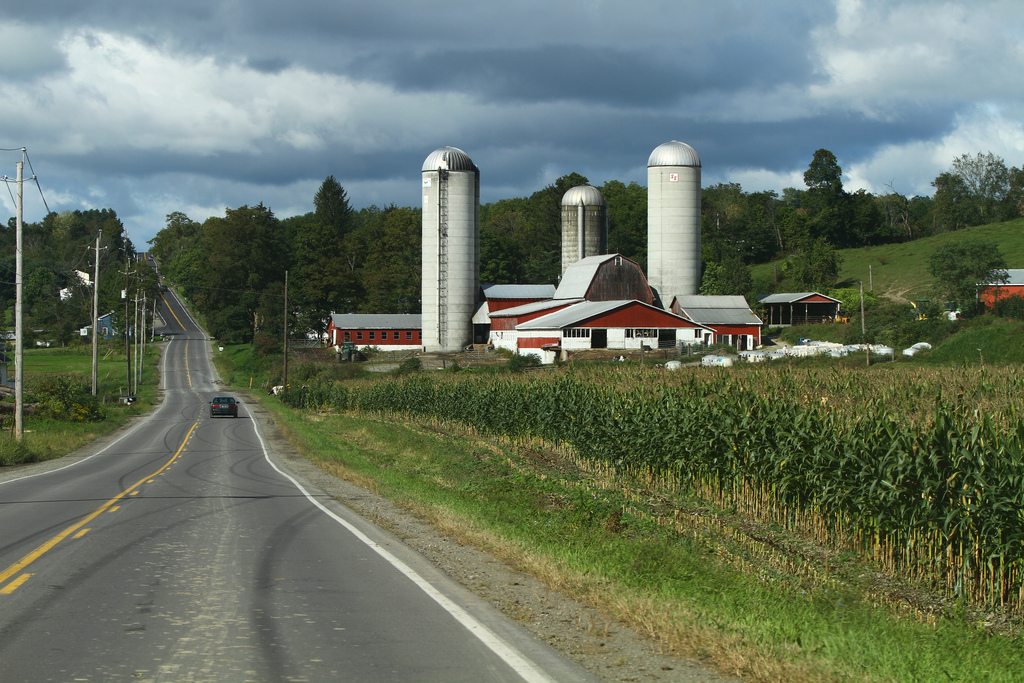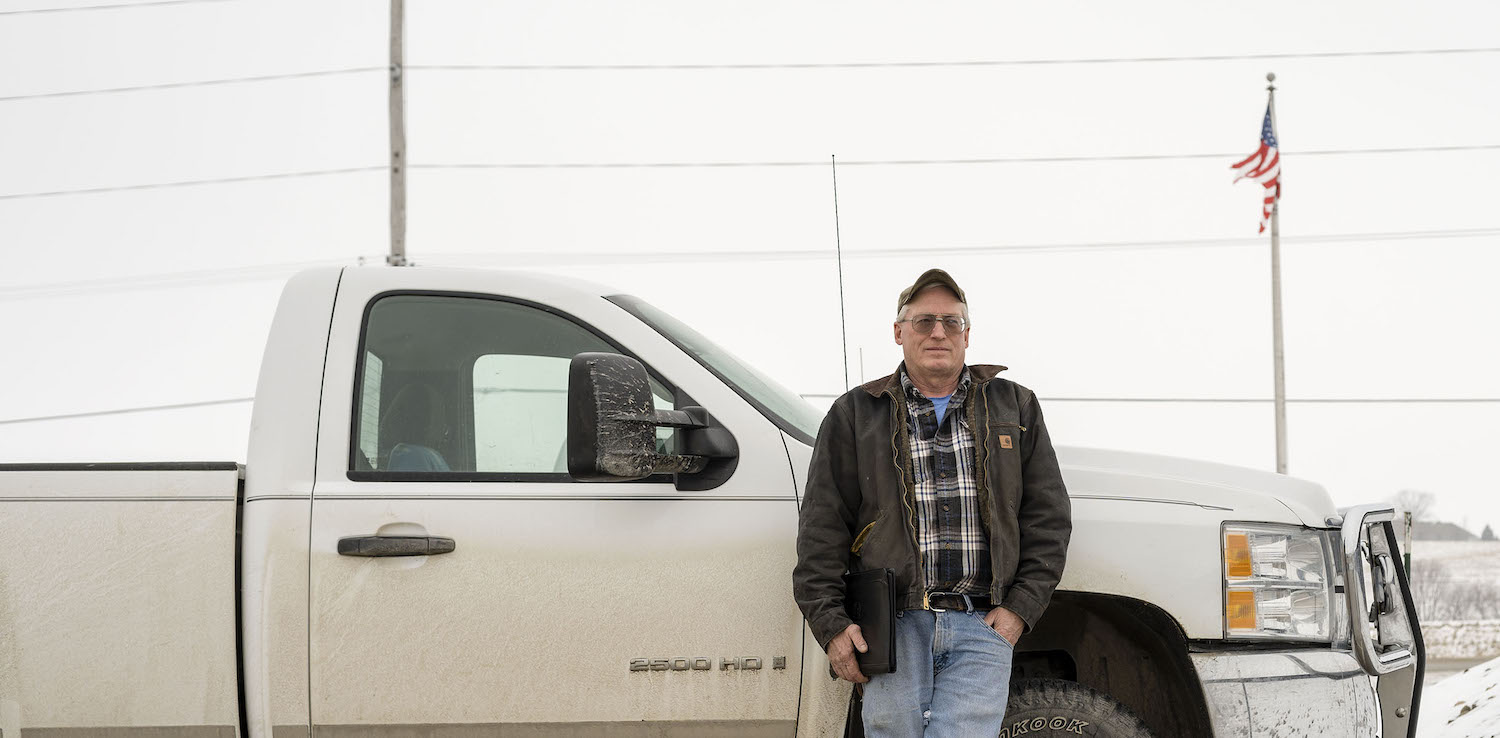Idaho State Republican Representative Patti Anne Lodge wants to expand a 2014 program providing contract inmate labor for agribusinesses, according to Ag Insider’s Chuck Abbott. Idaho has a farm labor shortage, the thinking goes, and also about 8,300 inmates in its correctional facilities. Why not put prisoners to work in the fields?
Maybe because the arrangement can have troubling implications if not handled well, including allegations of forced labor. That dynamic became evident just a few weeks ago, when Reveal from The Center for Investigative Reporting published an exposé on an Oklahoma rehabilitation center where judges can send people as an alternative to incarceration. The program, Christian Alcoholics & Addicts in Recovery (CAAIR), requires its residents to perform unpaid labor at chicken processing plants—a job former resident Brad McGahey called “a slave camp.” McGahey was sent to CAAIR as an alternative to state prison, even though he was not an addict.
Though the practice of “convict leasing”—a system of penal labor once practiced in the American South—fell out of favor in the early twentieth century amid widespread public outcry, remarkably similar practices have quietly reemerged in recent decades. The Economist reports prison labor is a billion-dollar industry; some of that is routed through private prisons, but state facilities have been providing labor for private companies since 1979. (Federal Prison Industries—a government-owned corporation that sells goods under the brand name UNICOR—calls its facilities “factories with fences.”) All of this is legal because of a loophole in the 13th amendment to the Constitution—yep, the one that abolished slavery—that allows involuntary servitude as punishment for a crime.
Building mattresses and roasting potatoes inside prison walls is one thing. But contract work on farms is another beast entirely: The labor itself is physically taxing, workers are vulnerable to extreme heat and inclement weather, and the workers don’t always have the same rights and representation as members of the general population.
Then, there’s the optics of using inmate labor on farms—which can be terrible and hard to ignore. In a 2015 documentary, produced by The Atlantic, on the Louisiana State Penitentiary in Angola, a voiceover explains that punishment for refusal to participate in “rehabilitation” through working in the fields can be as severe as solitary confinement. Shots of inmates toiling in the fields at that slave-plantation-turned-prison echo writer Whitney Benns in her story for the magazine: “In a sense, slavery never ended at Angola; it was reinvented.” As recently as 1995, Alabama state prisoners were forced to work alongside the road, tethered to one another in a modern-day version of the chain gang.
In Idaho, the program Lodge wants to expand—the Agricultural Work Program (AWP)—has been in place since 2015. Similar programs have sprung up around the country in the last decade or so. Idaho’s version is administered by Idaho Correctional Industries (ICI), a self-funded “offender training program” that also manufactures office furnitures and license plates; currently, it’s limited to a couple hundred inmates picking apricots and digging potatoes for six companies. But there’s a key difference between ICI’s desk chairs and its farm program: The desk chairs can only be sold to “authorized markets”— government agencies, schools, universities, and nonprofits. The AWP, by contrast, provides a labor force for for-profit farms. ICI did not immediately respond to request for comment.
Prison laborers hired through the program are paid, but are they earning fair wages for their work? Here’s how the economics shake out, according to Spokane, Washington’s Spokesman-Review, which ran down the numbers in August: The farms pay ICI a Department of Labor-established “market rate” to ensure inmates aren’t competing with community members for jobs. The stipulation is intended to ensure that inmates aren’t cheaper to hire than others who might be willing to do the same work. (Still, it’s worth noting that this “market rate” is set at the tenth percentile, which means that 90 percent of people are offering more for the same work. Here’s the rate card, made available through ICI’s website.)
Unsurprisingly, not all those wages go directly to the inmates. At one fruit farm, where the going rate is $8.05 per hour, ICI redistributes only $1.61 per hour to the inmate, according to the Spokesman-Review. It puts the remaining 80 percent of the money toward overhead costs, security guards, transportation, and “restitution for victims.”
Though Idaho has been using some forms of on-farm inmate labor for about a decade, the proposed expansion would allow a wider number of agricultural businesses to contract inmates, potentially including Idaho’s dairy industry.
But there’s another wrinkle to this story: An estimated 43 percent of Idaho’s farmworkers are undocumented. Which may mean that, as the new administration’s promise to crack down on illegal immigration has farmers biting their fingernails, farms may have to turn to inmate laborers to close the gap. Farmers across the country have said they’re unable to find enough employees, and though the reasons for this year’s labor shortage are hard to fully pin down, it may have something to do with beefed-up enforcement of immigration policies. In August, we wrote about Idaho dairy farmers trying to prevent Immigration and Customs Enforcement (ICE) from leasing beds in a county jail, fearing the agency’s presence would scare away their undocumented workers.
There’s a legal solution to all of this that would not require prison labor: the H-2A seasonal guest worker program, which sent 2,080 foreign workers to Idaho in 2014. But the program comes at a price some farmers find too steep. The Idaho minimum wage for H-2A workers is $11.75, far more than ICI is likely to pay under the AWP. H-2A also requires that farmers provide transportation and housing for their workers, an additional cost.
In light of all this, it makes sense that the Agriculture Work Program would appeal to politicians and farm businesses alike. It allows politicians to address the labor shortage without addressing underlying hot-button immigration issues. And though Lodge insists the program is not meant to provide cheap labor to businesses, $8 an hour is a heck of a lot less than $11.75. Besides, an on-demand workforce that comes with its own fleet of trucks, and can’t skip out on brutally hot days, sounds pretty hard to pass up.
Still, the ethical price of an involuntary workforce may ultimately be more costly than a few dollars saved per hour. Will an expanded AWP fly with Idaho’s legislature in 2018? That remains to be seen.











